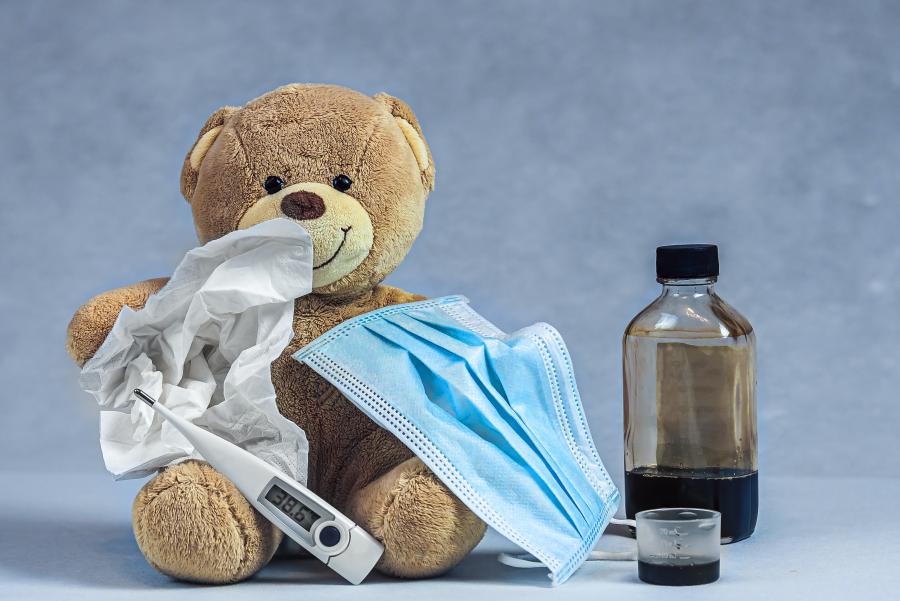Why is RSV such a big deal right now?
RSV stands for Respiratory Syncytial Virus, a virus that infects the respiratory tract. This common virus infects children and most have been infected with RSV at some point before they are 3 years old.1 Typically, it causes mild, cold-like symptoms but can lead to more severe illness. On average, there are 30 million cases of RSV, which cause 3.6 million hospitalizations and 100,000 deaths each year, worldwide. So if this is such a common virus, why is it such a big deal right now?
Well, there are a few reasons that you may be seeing RSV in the news this fall:
Changing Epidemiology of RSV
Epidemiology is the study of how diseases spread, who gets them, and why. This is done by looking at data about who is getting a disease, at what time of year, and other characteristics that might give clues as to why they got the disease. There are usually more cases of RSV during the winter months each year. Due to the COVID-19 pandemic shutdowns, the winter increase of RSV never happened during the winter of 2020-2021. As things returned to normal and people stopped wearing masks, RSV came back and lead to a “triple-demic” last winter. There were many more cases of RSV last winter and across a much larger age group than is typical.
This increase could have happened for a few reasons, each of which is just a theory at the moment:
- There now might be
- The SARS-CoV-2 virus might interact with the RSV virus to help it infect people.
- COVID-19 might damage the immune system of those who are infected, making them more vulnerable to RSV.
- The RSV virus may have changed to become better at infecting people.
While these all sound like solid reasons, there is no evidence that confirms any of them as the cause of the RSV increase.
RSV Vaccine
On May 3, 2023, the FDA approved the first vaccine to prevent infections caused by RSV in adults over 60 years of age.3 An RSV vaccine for pregnant people was approved on September 22 and recommended by the CDC to increase maternal antibody protection for very young infants.4 This is when a pregnant person produces antibodies against a disease that help protect their infant. Finally, monoclonal antibody products have been approved to help treat young children with severe respiratory infections due to RSV. These exciting new developments can help protect the most vulnerable age groups from severe infections due to RSV.
Last winter, we saw a nationwide increase in the number of RSV infections, but with new vaccines and treatments to prevent severe disease we can prevent a recurrence of the “triple-demic”. Learn how to Protect Yourself from COVID-19, Flu, and RSV.
Definitions
Respiratory Syncytial Virus (RSV) - RSV is a virus that can make people, especially babies, young children, and the elderly, feel sick. It is a lot like a cold and can cause coughing, sneezing, and runny nose. Sometimes, RSV can make it hard to breath, which is why doctors keep a close eye on the young and elderly when they get RSV.
Epidemiology - Epidemiology is the study of how diseases spread and affect people in a community. Epidemiologists try to figure out where a sickness comes from, how it spreads, and who's most likely to get sick.
Triple-demic - This is when 3 different diseases or health issues are spreading at same time. It has been used to describe an increase in RSV, COVID-19, and influenza infections that happen at the same time in the winter.
Maternal antibody protection - Mothers pass on some of their antibodies to their babies through the placenta before they are born and later through breast milk. This is like giving babies a temporary shield to protect from certain germs until their own immune system gets stronger.
Monoclonal antibodies - Monoclonal antibodies are antibodies that have been created in a lab and are targeted to a specific germ. These antibodies can be given in specific cases to give a person's immune system help when fighting off an infection.
Sources
- CDC. Symptoms and Care for RSV. Centers for Disease Control and Prevention. Published September 6, 2023. Accessed October 5, 2023. https://www.cdc.gov/rsv/about/symptoms.html
- Abu-Raya B, Viñeta Paramo M, Reicherz F, Lavoie PM. Why has the epidemiology of RSV changed during the COVID-19 pandemic? eClinicalMedicine. 2023;61:102089. doi:10.1016/j.eclinm.2023.102089
- Commissioner O of the. FDA Approves First Respiratory Syncytial Virus (RSV) Vaccine. FDA. Published May 4, 2023. Accessed October 5, 2023. https://www.fda.gov/news-events/press-announcements/fda-approves-first-…
- RSV (Respiratory Syncytial Virus) Immunizations | CDC. Published October 5, 2023. Accessed October 5, 2023. https://www.cdc.gov/vaccines/vpd/rsv/index.html

